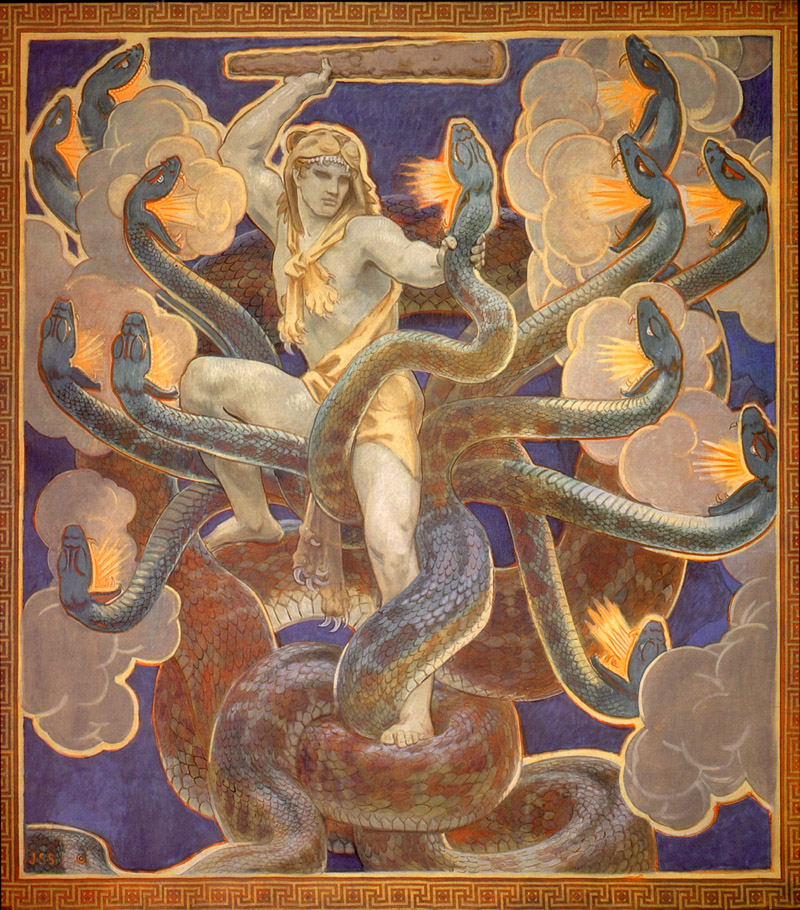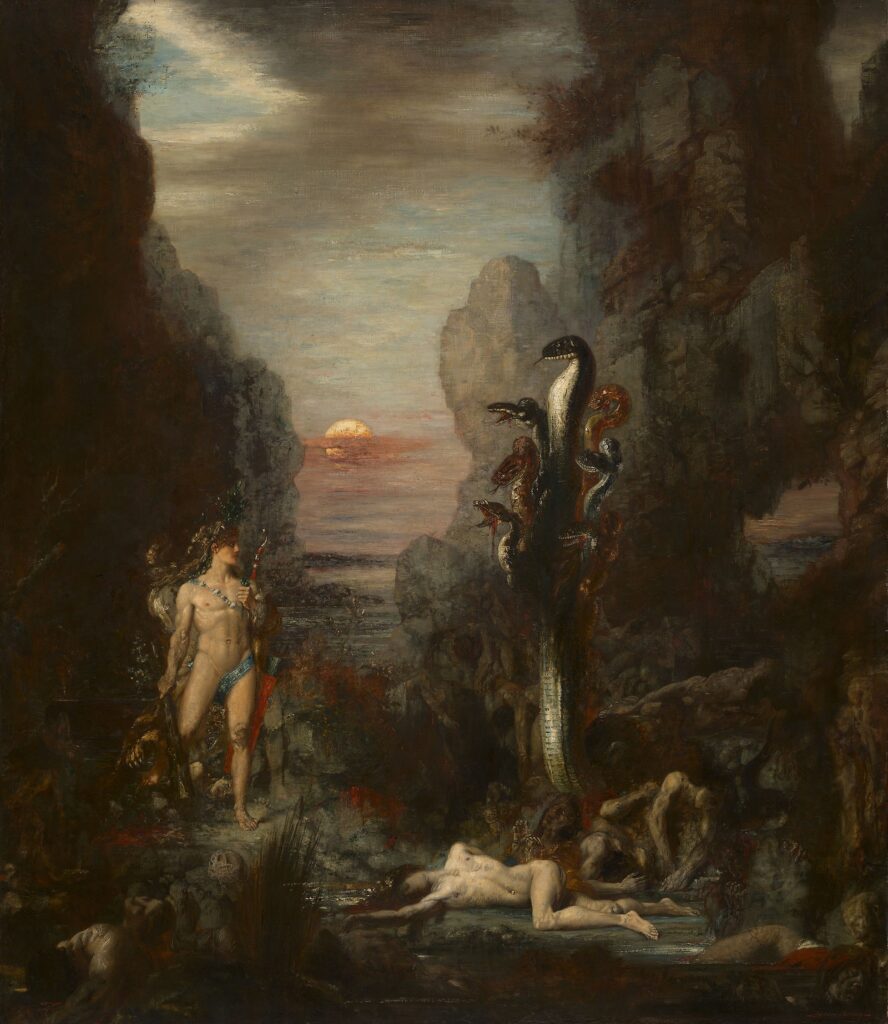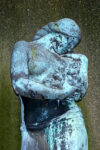The following is from the latest issue of the Full Stop Quarterly. You can purchase the issue here or subscribe at our Patreon page.
I
“You cut off one head, and then five grow in its place,” Emily Cunningham, a former Amazon worker, told Bloomberg Businessweek in July. (Cunningham lost her job for communicating with her coworkers via an internal listserv about management’s firing of Chris Smalls, a warehouse employee who organized a safety strike in New York City.) Her meaning was that Amazon could try to “cut off the head”—i.e., retaliate against—every worker who challenged the company’s avaricious pandemic policies; yet doing so would only inspire more workers to show solidarity with their fired comrades by getting involved in organizing. Amazon had awakened a many-headed monster that it could not easily put down.
Indeed, since the pandemic erupted in the spring, Amazon workers have been making news for their increased workplace activism, holding meetings around the world to pressure CEO Jeff Bezos to raise pay, provide paid sick leave, and ensure safer working conditions. The C-suite has responded by surveilling employee listservs and firing rabble rousers, tactics that will likely claim more casualties before the crisis is over. As the Bloomberg reporter who interviewed Cunningham notes, the pandemic-inspired movement for workplace democracy at Amazon, as in other firms and industries, faces a formidable dilemma: Either it will have to build enough informal strength to move labor policy in its favor (so that it can bargain instead of raising demands the boss ignores); or it will have to wait for labor policy to change in order to have the formal strength to get executives to the table. Given that corporate cash steers national politics, and that the relevant branches of the federal government are currently controlled by a minority party hostile to labor rights, neither path looks especially promising at the moment.
Still, Cunningham’s mention of the self-regenerating heads of her Amazon co-workers is intriguing. She borrows the image from the classical Greek myth of Hercules and the twelve labors. During the second labor, Hercules, joined by his nephew Iolaus, faces off against the hydra, a many-headed monster whose odor alone can kill a human being. Masking up so as not to inhale the creature’s noxious aerosols (the myth’s parallels to pandemic life are numerous), Hercules tracks the monster in its swamp and attacks it, using his mighty club to smash in one head, then another, only to discover that, for every head smashed, two more grow back in its place.
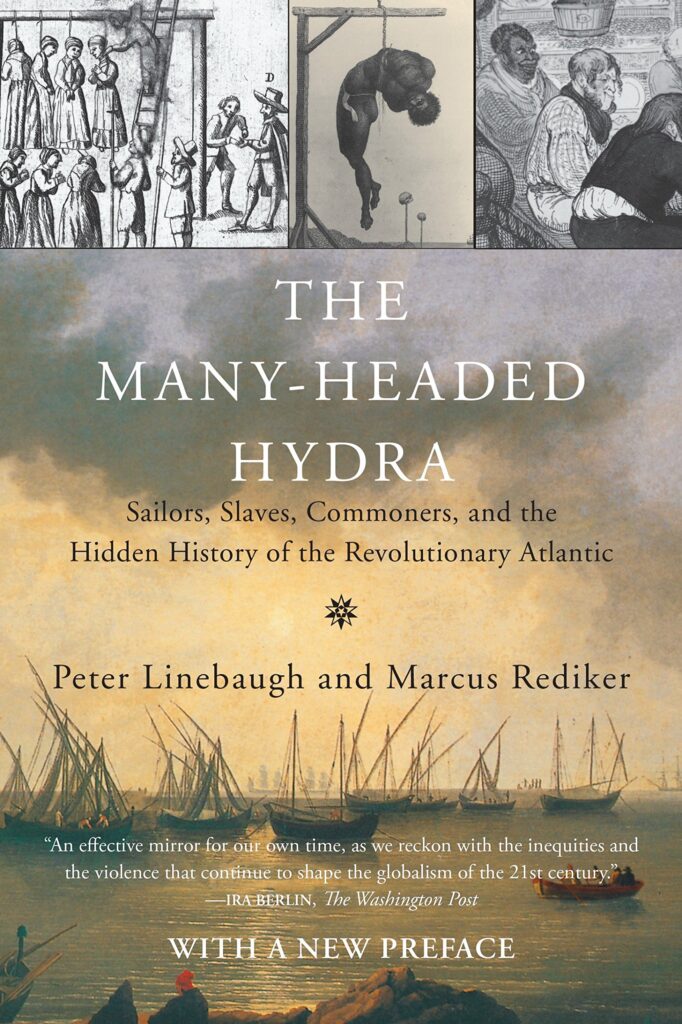
In The Many-Headed Hydra: Sailors, Slaves, Commoners, and the Hidden History of the Revolutionary Atlantic, historians Marcus Rediker and Peter Linebaugh recount how, during the emergence of transatlantic capitalism, a period when the slave trade, piracy, and global commerce exploded, the hydra alternately served as a symbol of malevolent insurrection and emancipatory rebellion, depending on who was telling the story. To ruling-class elites who identified with Hercules, the swamp-dwelling monster symbolized the terrifying numerousness of those enslaved, indentured, or otherwise coerced to labor under their regimes. Contemplating their laborers’ self-regenerating power, they used any means necessary to crush insurrection. To the motley crew of rebels who plotted coups, burned cash crops, or fled into marronage in defiance of their overlords, the hydra symbolized the unrelenting struggle of the vast majority against the various forms of minority rule that tyrannized the Atlantic world. Whatever violence their overlords rained down on them, such rebels had faith in the immortality of their number, many sacrificing their lives in hopes that the ultimate justice of their cause would triumph. Siding with the motley crew, Rediker and Linebaugh argue that the hydra represented the ever-present possibility of multiracial, multilingual, trans-continental resistance to global capitalism. Even though the monster’s many heads could not always see one another or learn about each other’s struggles, the same metaphysical pathos, the same indomitable will to self-rule, united their struggles across time and place.
Given its pervasive influence from antiquity to modernity, it is unsurprising that the many-headed hydra inspires workers in the twenty-first century to stand up against their corporate masters. That said, the hydra’s fate is hardly encouraging. In the myth, Hercules slaughters the swamp monster by deploying his nephew Iolaus as a henchman. While Hercules hacks away the heads, Iolaus cauterizes their necks, thereby preventing new heads from growing in their place. (One can almost picture Jeff Bezos deploying Human Resources to the same end.) After all the regrown heads are severed, the champion then turns to the final head, the monster’s non-regenerable neurological center, and cuts it off with his sword. Thus ends the hydra’s resistance and the story of Hercules’ second labor.
II
Imagine, juxtaposed, the images of the hydra’s self-multiplying heads and King Louis XVI’s severed head rolling off the guillotine platform in the Place de la Concorde, and you will have some sense of the nightmare that haunted Europe’s ruling elites during the French Revolution. Yet even before the Montagnard phase of the uprising began in 1793, it had already been raging for years in Edmund Burke’s imagination. In countless letters after 1789, the Irish parliamentarian expressed his fear that Europe was in danger of turning into a “world of Monsters” wherein the “Elements which compose Human Society seem all to be dissolved.” The “world of Monsters” was mass democracy, and the dissolved elements were those distinctions of rank and vocation that make human society legible as such. When the French people rose up en masse against the Bourbon crown to found an egalitarian republic, they declared the rights of Frenchmen to be human rights, established universal suffrage and public education for men, and abolished noble titles. Implicit in these declarations was a near-total repudiation of the absolutist ancien régime and the privileges it upheld. Under the nouveau régime, all were held to be political equals and given the dignified title of citoyen. For Burke and his friends, the instantaneous destruction of an august monarchy was tantamount to destroying civilization itself.
In Reflections on the Revolution in France, authored years before the Reign of Terror, Burke says that the “monstrous fiction” of universal equality “inspir[es] false ideas and vain expectations into men destined to travel in the obscure walk of laborious life” and “serv[es] only to aggravate and imbitter that real inequality, which it never can remove.” Democracy, in other words, is the double lie that he whom nature has exalted for rule should have to appeal to the commoner for permission to enact his will, and that the commoner, by applying his reason to politics, could become worthy of the sovereignty nature originally withheld from him. This is not to say that the commoner does not possess his share of human dignity. It is rather that his sovereignty ought never to extend beyond his own body. Hemmed in by another’s authority, he can grow and prosper where he is. Let him loose from his keeper, and he joins up with the plebeian mob.
In practice, the argument continues, the monstrous ideal of universal equality replaces institutional continuity with revolutionary chaos. A democratic revolution, once begun, can never resolve itself into a stable political order, for democracy is a permanent state of insurgency that begins again every time there is the slightest shift in the popular will. “[B]y preserving the method of nature in the conduct of the state,” however, “in what we improve we are never wholly new; in what we retain we are never wholly obsolete.” Nature, which is history’s lawgiver, makes no intergenerational leaps, while democracy forces a great leap forward in every political cycle. Hence, unlike the monarch who introduces change at a pace his people can follow, democracy churns out one radical reform after another, one “monstrous tragi-comic scene” after another. Its practical contradictoriness issues logically from its conceptual abstractness. All political outcomes, tragic and comic, follow from an ideal that erases natural distinctions and denies the laws of historical progress.
Since neither nature nor history authorize its basic principle, democracy must be viewed as an aberration from the known—a monster out of nowhere. It is monstrous because it is un-lifelike, repudiating the hierarchical relations that vitalize and reproduce decent society. Burke’s polemics against mass democracy were so influential across Europe that even much more gifted philosophers like G. W. F. Hegel could recognize their own concerns in them. Like Burke, Hegel viewed democracy’s “abstractness” as antithetical to the project of building intergenerationally resilient institutions. “Revolution is [egalitarian society’s] norm,” Hegel judges in the Phenomenology of Spirit, because the will of the mass is nothing but “the restless agony of the unexpressed individualities that comprise it.” What makes individuality restless under democracy is its lack of established social bonds. Whereas under elite rule the common man stands in definite relations to his fellow men and institutions, conscious of himself as a member of a ranking order, under democracy he stands shoulder-to-shoulder with his equals, holding the same rank as everyone else. His political identity with his peers, and theirs with him, empowers them to do everything and nothing at once. And because none among the “people”—Hegel uses the disparaging hoi polloi—can concretely determine his own relation to the whole, mass democracy inevitably becomes a “fury of destruction” that substitutes pure action for genuine politics. Alluding cryptically to the Reign of Terror, Hegel surmises that French democracy’s short-lived accomplishments held “no more meaning than cutting off the head of the cabbage.”
The democratic monster’s form of self-regeneration is antithetical to the form of social reproduction sought by Burke and Hegel. This is because they entrusted social reproduction to the private hierarchies that extend from the home outward: man over wife and child, landlord over tenant, employer over employee, and so on. Mass democracy, on the other hand, produces nothing but copies of indistinguishable, disposable heads—“citoyens.” The essential activity of human society, however, is the reciprocal interaction of its many distinct parts, the rational division of labor within an overall hierarchy that works for the good of all. Without hierarchy in private and in public, true civilization is impossible. The ruling elite’s permanent rival, therefore, is anyone who seeks to transform the ruled into self-rulers or to abolish the concept of rule altogether.
III
The contemporary appeal of the hydra as a symbol of democratic insurgency likely stems from a material fact understood by all workers who have tried to build organizational power where none yet exists: The law is not on their side. And because the law is not on their side, many workers will have to stick their necks out at the real risk of getting their heads cut off (figuratively speaking). And when those heads are gone, many more will have to be ready to rise in their place and continue the war of attrition until someone gets the better of Hercules. There is a moving, if morbid, ethic of solidarity in this redux of the hydra myth. It contains the liberated consciousness of workers who understand that by hurling themselves at Corporate Hercules, they risk less than if they avoid the fight altogether.
Yet is not just Hercules and his sword that the hydra must defeat. There is also Iolaus and his cauterizing iron. First Hercules cuts off the head, then Iolaus sutures the wound so that no more heads can grow in its place. Workers have the right to complain about the employer’s retaliatory abuses. But the moment their criticisms can be construed as an invitation to join a group with a purpose unrelated to on-the-job productivity, they can be let go for “solicitation” during work hours. Many workers are empowered by the National Labor Relations Act to engage in safety-related work stoppages. Yet that is not enough to stop management from vindictively firing them for violating “social-distancing protocols.” That so many more workers will face retaliation for organizing is not to say that the Amazonian hydra (or its comrades in other industries) is unformidable. Indeed, Bezos’ extreme reaction to any sign of workplace organizing is evidence of the extent to which it rattles him. His pandemic-era crackdown reveals that he will deploy every weapon at his disposal—the legal, the legally specious, and the illegal—to crush the hydra of workplace democracy in his warehouses.
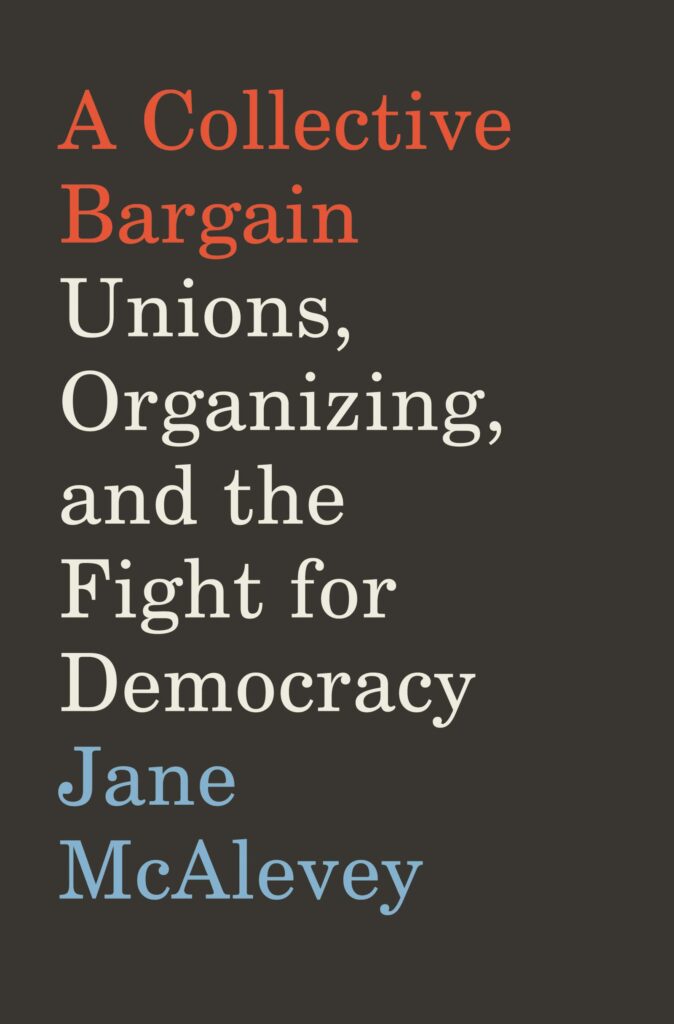
In her recent book, A Collective Bargain: Unions, Organizing, and the Fight for Democracy, Jane McAlevey explains how the workplace dynamics at an Amazon warehouse extend to the current power structure of the US, wherein ordinary people have virtually no influence on work-related or public policy. “In the United States,” she writes, “we are stuck with a high court that will rule against workers and the planet for another thirty to forty years” as well as a fully corporatized legislative industry that prioritizes monied interests. “Lawsuits, legal approaches, and advocacy, the modus operandi of . . . progressives, simply will not work” as the main strategy for building democratic power that can challenge this state of affairs. Neither will mass electoral mobilizations like the Bernie Sanders campaign suffice, no matter how humane their aims. The only strategy proportional to the scale of the crisis, according to McAlevey, is the mass strike aimed at dismantling ruling-class control over US political economy. Without a comprehensive, solidary approach that raises individual workplace struggles into class-conscious actions, Hercules will continue to dominate and the hydra will continue losing heads.
McAlevey’s argument, though well-known among labor-movement organizers and activists, is far from mainstream. Many remain skeptical that the US labor movement, which is historically weak in terms of membership density and legal empowerment, has the capacity to mount a formidable challenge to a much better-funded, much more organized ruling elite. Moreover, with the exception of Sara Nelson of the Association of Flight Attendants, few national labor leaders view the mass strike as a strategic necessity. Yet McAlevey seems to be less concerned with the formal obstacles that traditional union structures present to mass strikes than with the mode of organizing it takes to build one. She seems to understand that her call is directed not to old-guard union leaders but to an insurgent rank-and-file, people like Amazon’s Cunningham and Small, who put their lives on the line to make their workplaces more humane.
Organizing for a mass strike requires generalizing the radical consciousness that views not striking as a greater risk than continuing to live under another’s tyranny. Notably, McAlevey thinks that the methods required to plan a mass strike are the same as the ones required to organize a smaller-scale workplace strike. Indeed, most of the work of a mass strike happens locally. From the get-go, the organizer’s focus is on building a supermajority consensus in support of the strike and its aims. Building consensus requires persuading people who start from a place of reticence or antagonism to accept that only direct action can lead to paradigmatic change. Consensus-building does not end in a compromise between two recalcitrant positions; its goal is an overall strategic agreement. That way, when adversity inevitably comes in the form of employer intimidation, legal threats, and so on, there will be fewer workers who abdicate from their commitment. The supermajority consensus on which a strike is built is the counter-coercive force that will ultimately subdue the billionaire class. When employers, legal power brokers, and policymakers are no longer in complete control of our political economy, they will have no choice but to concede at least some of what the strike demands.
It is clear that McAlevey’s conception of the mass strike does not aim at destruction but a founding. Stopping work en masse is a strategy for building democratic institutions that prioritize the nurturing of human life over profit. In the course of building the mass strike, a process of political education unfolds through which enduring relationships rooted in a supermajority consensus about a concrete political-economic program take shape. In other words, the mass strike is a supersession of the hydra-model of revolution, which, with its principle of ad hoc self-regeneration, falls short of forming the resilient institutional bonds needed to repel Hercules.
This account of the mass strike addresses Burke and Hegel’s critique of mass democracy head-on. Instead of assuming, as Burke does, that mass democracy is incapable of building social relationships that yield intergenerational continuity, McAlevey proposes that relationship-based, class-conscious, egalitarian-minded organizing can yield enduring democratic outcomes. But if that sounds speculative, just look at the historical record. That the ruling elite have worked so concertedly since the New Deal to stamp out the right to strike is evidence of its constructive efficacy, or at the very least, the perceived threat of its efficacy. McAlevey’s charge is to imagine what executing a massive strike aimed at total political-economic transformation could accomplish.
The ruling elite cannot adequately prepare for a mass strike. It is the true monster out of nowhere, the democratic society that does not require private hierarchies in order to sustain itself. Instead, it teaches ordinary people how to rule themselves in the course of wielding their immense collective power. It does not ask them to wait for what they need until someone else judges they are ready to have it. It takes for granted that they have always been ready, if only they would act in accordance with that truth. Imagining the mass strike and practically organizing it are thus one and the same activity. The daily work of planning and building a supermajority consensus through slogging, frustrating, often bitter interactions, is a gesture, however slight, toward a more just political order. Much of the learning that will take place during this process will be a work of recollection, of recalling what was stored as memory in the heads that Hercules cut off. Much of it, too, will involve encountering the new and unexpected, uncovering aspects of human nature, possibility, and constraint that were previously unknown.
At least one major question vexes this vision of a mass strike, though, and it is the meaning of the word consensus. What is the nature of that general agreement among so many different heads? Is it a mere cover for the deeper disagreements that cannot be reconciled, disagreements that are manifest in our current politics of seemingly irreparable polarization? It is still to be discovered whether staking our collective fate on our shared material interest in abolishing capital will be sufficient to supersede the hydra and fulfill our democratic ideal.
Kelly M. S. Swope lives in Nashville, Tennessee, where he works as a graduate student and teacher. He serves on the organizing committee of Vanderbilt Graduate Workers United and will soon defend a doctoral dissertation on G. W. F. Hegel’s philosophy of education.
This post may contain affiliate links.



